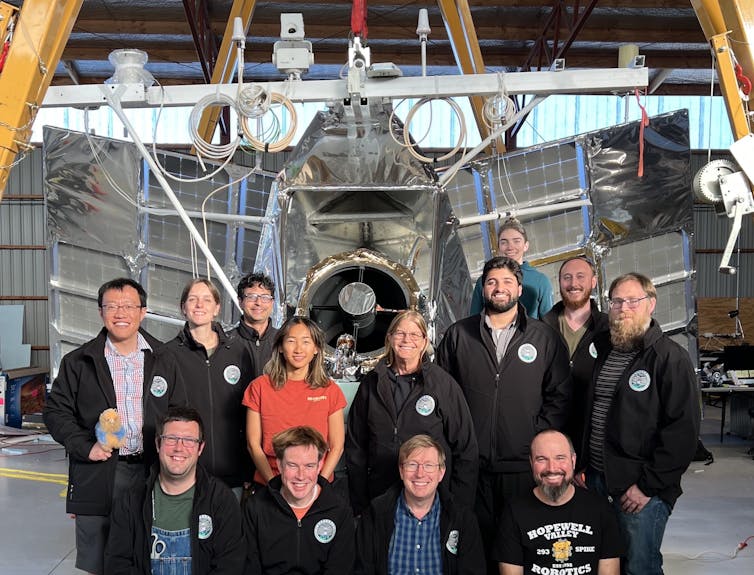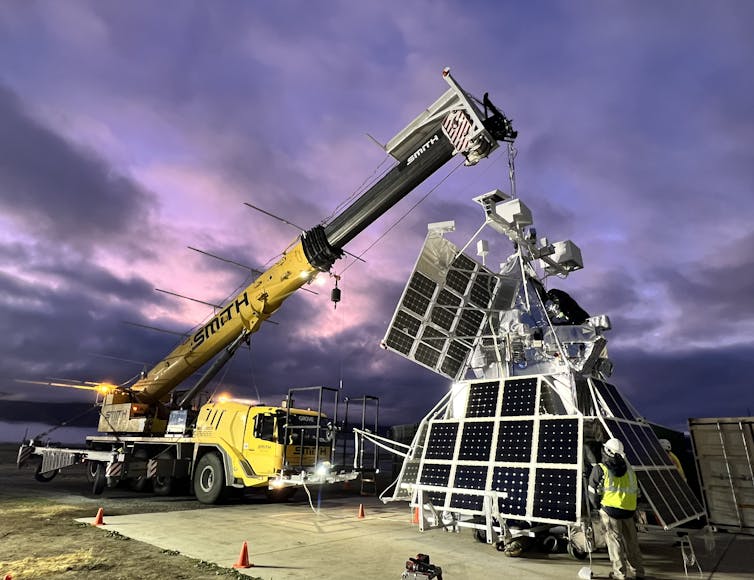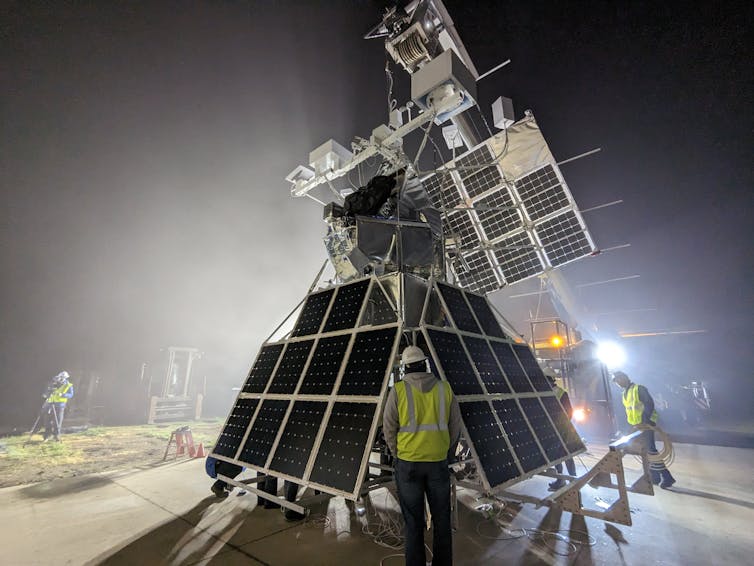Achi news desk-
An astronomical telescope designed to complement the aging Hubble Space Telescope rose from the south island of New Zealand on April 16 2023. But as a sphere the size of a football stadium rose quietly and slowly over the Tauhinukorokio mountains, calls began to come in from residents.
Police and local radio stations, however, had been briefed by NASA that the huge helium balloon would lift the two-tonne SuperBIT telescope to 40km above sea level, over the next three hours. The mission we were involved in was to test whether a balloon-borne telescope could capture deep space images with high enough resolution to study the unknown substance, dubbed dark matter, which is 85% of all matter in the universe.
The observations and subsequent data analysis have proven that balloon-borne experiments can be just as useful as rocket-launched ones, but are much cheaper. It is now up to scientists, government agencies and private companies to make the most of them.
For the next month, polar stratospheric winds carried SuperBIT around the world every eight days, mostly over the Antarctic ocean but clipping the tip of South America. He went where the wind took him, but he could look in any direction.
NASA
Every day, solar panels recharged their batteries. At night, he photographed the sky, including the Tarantula nebula, a light source 160,000 light years away, and clusters of galaxies 20,000 times further away.
Without a tripod, SuperBIT used gyroscopes to stabilize any wobble (the stratosphere was found to be surprisingly quiet … except in turbulence above the Andes, where SuperBIT fell 1,000 feet at one point). It was the first balloon-borne telescope to achieve Hubble-like performance for the short wavelengths of light visible to the human eye.
The balloon and telescope continued to function perfectly, but satellite communication links gradually failed. We think radiation damaged the SuperBIT antenna. We could still download data by dropping hard drives, attached to the telescope, to the ground. But eventually, Nasa wanted their balloon back, so we parachuted the telescope down to Argentina.
This was SuperBIT’s fifth flight, building on ten years of graft.
Advantages of a balloon
Unlike orbital missions, if balloon payloads don’t work the first time, they can be repaired and relaunched. This fosters simple, creative design. Components that have now been proven to work in space include hair gel (to hold things), chicken roasting bags (to keep them warm), and parts of bows used by Olympic archers (to drop it).

SuperBIT, April 2023.
Failure and success are opportunities to learn. After every flight, we do-and-fix, or improve the technology. For example, as cameras have improved rapidly and become cheaper, we have installed a new sensor on SuperBIT every year. All this reduces costs.
Most of the cost of traditional spaceflight is to mitigate the risk of failure. There are always trade-offs between security, protecting expensive equipment and getting data.
If a balloon mission goes wrong, it’s usually less important, because we get the equipment back. SuperBIT was built primarily by Canadian PhD students, who have already founded a technology start-up.
Risk management is different for balloons, and NASA doesn’t always get the balance right. Waiting for “perfect” weather and the perfectly designed balloon underpinned all the launches from Texas in 2017. Calculations of physically impossible risk, such as a balloon bursting three times, were part of the program 2023.
A balloon can only burst once. But the French and Canadian space agencies, the US National Center for Atmospheric Research and the UK Science Research Council have all proven that a balloon can be relaunched every few days. Risk assessment can be more realistic. Balloon teams can test, play around and continuously improve the process. For rocket launches, there is only one chance.
Growing international interest
Geography is important in developing a successful national balloon programme. Countries with a wide latitude can make short flights within their own airspace, such as Canada and the United States. Northern European countries can use stable and reliable summer winds to extend flights across the Atlantic ocean, for example from Scotland to Canada.
Countries can also launch from the territory of partner countries around the world, such as the UK launching from Australia.
Geopolitics also influence the choice of flight path: a lesson well learned from the rogue Chinese balloon that flew over the United States in 2023 and was eventually shot down. Permission is required to cross any country’s airspace, and we avoid war zones or areas of conflict where the balloon could be mistaken for a hostile target. This is one reason we launched from New Zealand.

Richard MasseyCC BY-SA
Government interest in national balloon programs is increasing, as new materials science and manufacturing techniques have created balloons that retain helium, extending flights from days to months. The United States reaffirmed its interest in a government paper in 2023 and Canada, France and Sweden have long-standing balloon programs.
The UK maintained a first class balloon program until the 1990s. By quitting, he missed an opportunity to train scientists and engineers into leadership roles. British teams are still often invited to join French or US satellite missions, but we no longer lead or decide what is built. We foresee few technical, geographical or political obstacles to the UK restarting a balloon program alongside its nascent rocket launches.
Balloons are high enough
Officially, space starts at 100km above sea level. But there is no magic line, and precious little atmosphere above 40km. There, the stars stop twinkling and the sky is black. Long exposure astronomical photographs become sharp and reveal faint, distant objects that are unclear to astronomers on the ground.

Steven BentonCC BY-SA
Balloon cameras or spectrographs can also look down, and are high enough to capture observations of Earth just like those from satellites. They can also take atmospheric measurements around them, including the ozone layer in the stratosphere.
Balloons will not replace all rockets, as they cannot travel higher than 40km. And although helium is a limited resource, balloons are more “environmentally friendly”. They require no rocket fuel during launch, they do not add to growing space debris in orbit – and at the end of their working life, they are not burned up in the atmosphere. What’s not to like?

